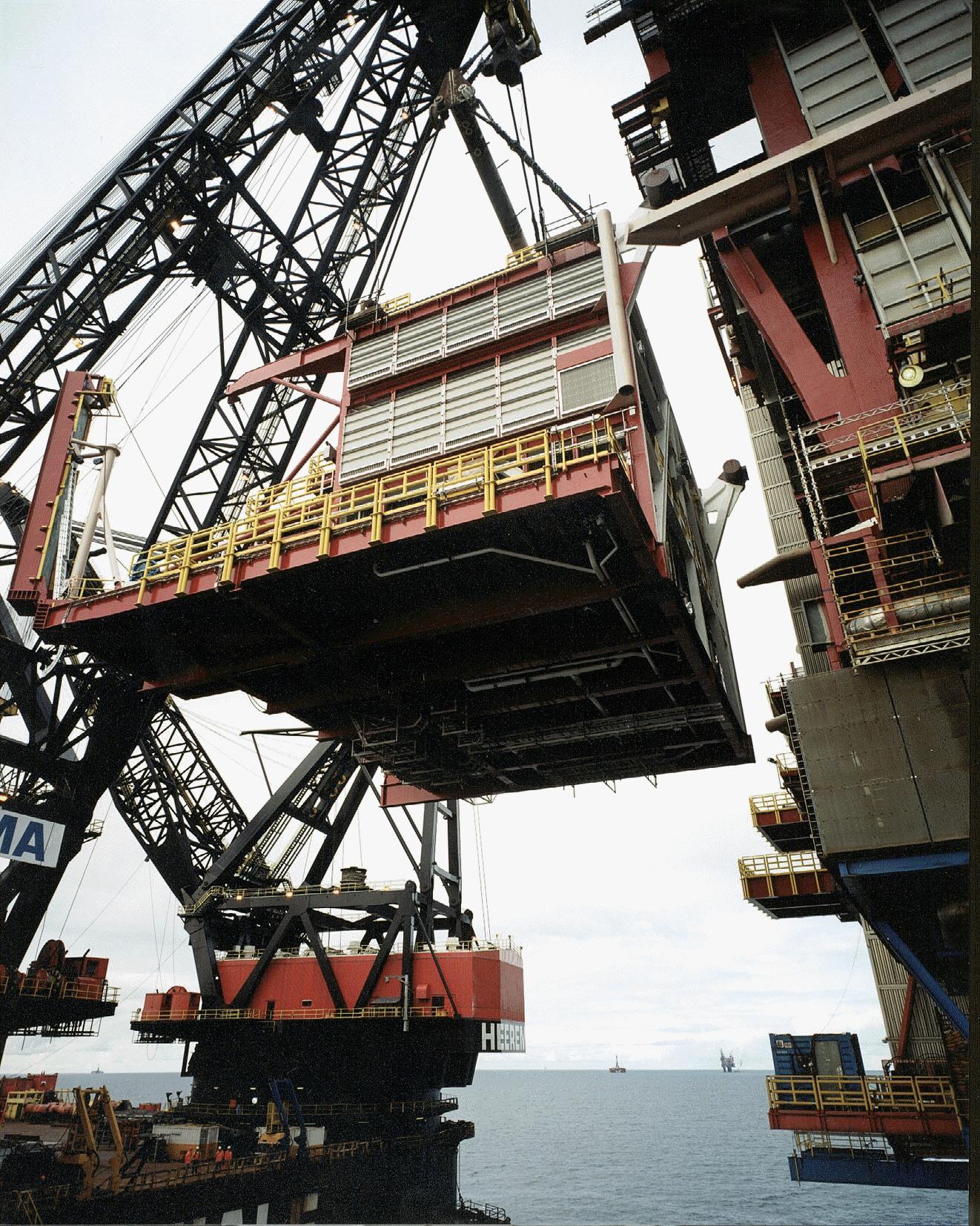PRODUCTION FROM THE FIELD
Source: Norwegian Offshore Directorate
Print illustration Download data PRODUCTION FROM THE FIELD Download PDF Download as image (PNG)
High Contrast Mode
Development
Gullfaks Sør is a field in the northern part of the North Sea, just south of the Gullfaks field. The water depth is 130-220 metres. Gullfaks Sør was discovered in 1978, but comprises several discoveries made in later years. The Gullfaks Sør deposits have been developed with a total of 13 subsea templates tied-back to the Gullfaks A and Gullfaks C facilities. The initial plan for development and operation (PDO) for Gullfaks Sør Phase I was approved in 1996 and included production of oil and condensate from the Gullfaks Sør, Rimfaks and Gullveig deposits. The production started in 1998. The PDO for Phase II was approved in 1998 and included production of gas from the Brent Group in the Gullfaks Sør deposit. In 2004, the Gulltopp discovery was included in Gullfaks Sør. Gulltopp is produced through an extended reach production well from the Gullfaks A facility. A PDO for the Skinfaks discovery and Rimfaks IOR was approved in 2005. An amended PDO for the redevelopment of Gullfaks Sør Statfjord Formation with two new subsea templates was approved in 2012. A PDO for Gullfaks Rimfaksdalen, which includes the Rutil and Opal deposits, was approved in 2015. It consists of a new subsea template and four production wells. Since 2017, gas production is increased by two subsea wet gas compressors, tied-back to the Gullfaks C platform. A PDO exemption for some prospects and small discoveries, which can be drilled and produced from existing Gullfaks Sør facilities, was granted in 2018. A PDO exemption for the Opal Sør deposit was granted in 2019.Reservoir
The Gullfaks Sør deposits produce oil and gas from Middle Jurassic sandstone in the Brent Group and from Lower Jurassic and Upper Triassic sandstone in the Statfjord Group and Cook and Lunde Formations. The reservoirs are in several rotated fault blocks at depths of 2400-3400 metres. The reservoirs in the Gullfaks Sør deposit are heavily segmented, with many internal faults and challenging flow characteristics, especially in the Statfjord Group and Lunde Formation. The other deposits in the Gullfaks Sør area have generally good reservoir quality.Recovery strategy
The Brent reservoir in Gullfaks Sør is mainly produced by pressure depletion after gas injection ceased in 2009. Pressure support from gas injection started for the Skinfaks Sør deposit in 2023. The Lunde Formation in Gullfaks Sør is produced with depletion as well as pressure support from gas injection. Gas export from Rimfaks started in 2015, but limited gas injection was maintained in the Brent Group until 2018. The Gullveig, Gulltopp and Rutil deposits are produced by pressure depletion and partial aquifer drive. The Skinfaks deposit is produced with gas lift. The Rutil and Opal deposits are produced by pressure depletion.Transport
The oil is transported to the Gullfaks A facility for processing, storage and further transport by tankers. Rich gas is processed on Gullfaks C and exported through Statpipe to the Kårstø-terminal.Status
The Gullfaks Sør production is on decline, but the field still has significant remaining gas volumes. New wells are continuously drilled in the area with a licence-owned rig. Work is ongoing to optimise gas injection on the field and timing of blowdown of the gas cap in Gullfaks Sør Statfjord.ACCRUED INVESTMENTS IN NOMINAL NOK
Source: Norwegian Offshore Directorate
Print illustration Download data ACCRUED INVESTMENTS IN NOMINAL NOK Download PDF Download as image (PNG)
High Contrast Mode
NORWEGIAN OFFSHORE DIRECTORATE'S CURRENT RESOURCE ESTIMATES
All numbers in mill. Sm3 o.e.
Print table Download data NORWEGIAN OFFSHORE DIRECTORATE'S CURRENT RESOURCE ESTIMATES
High Contrast Mode
Visit the Norwegian Offshore Directorate's fact pages for more information
